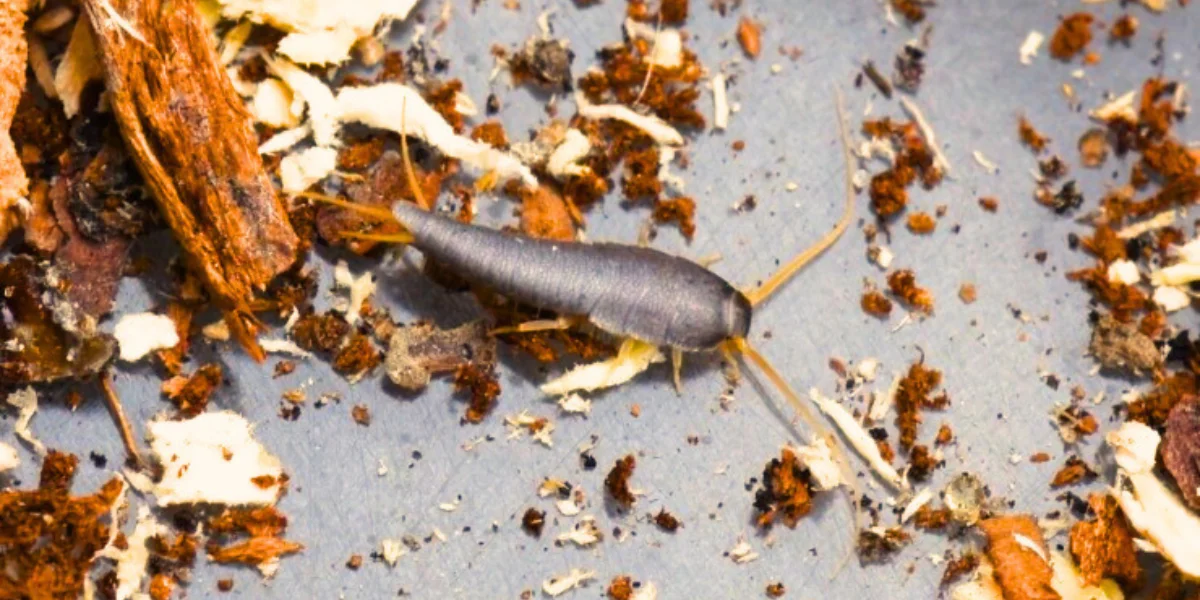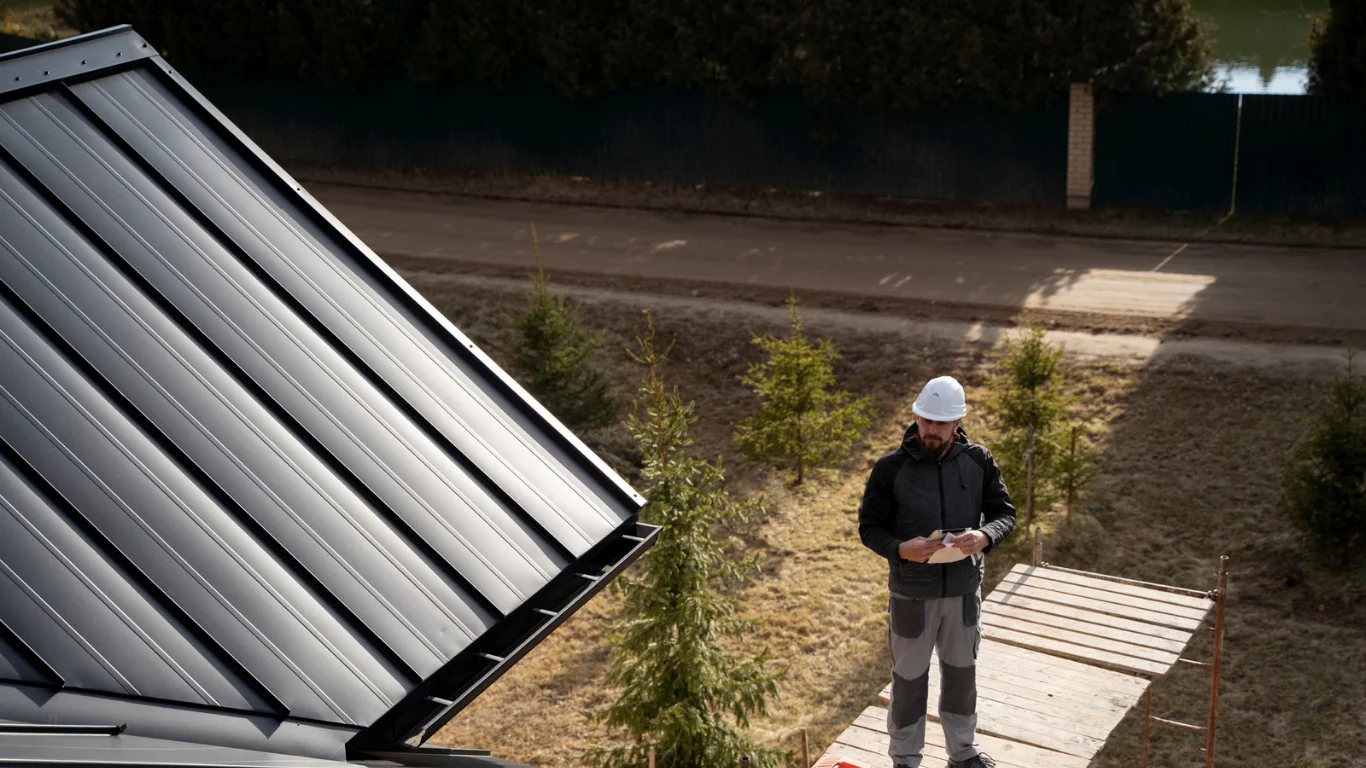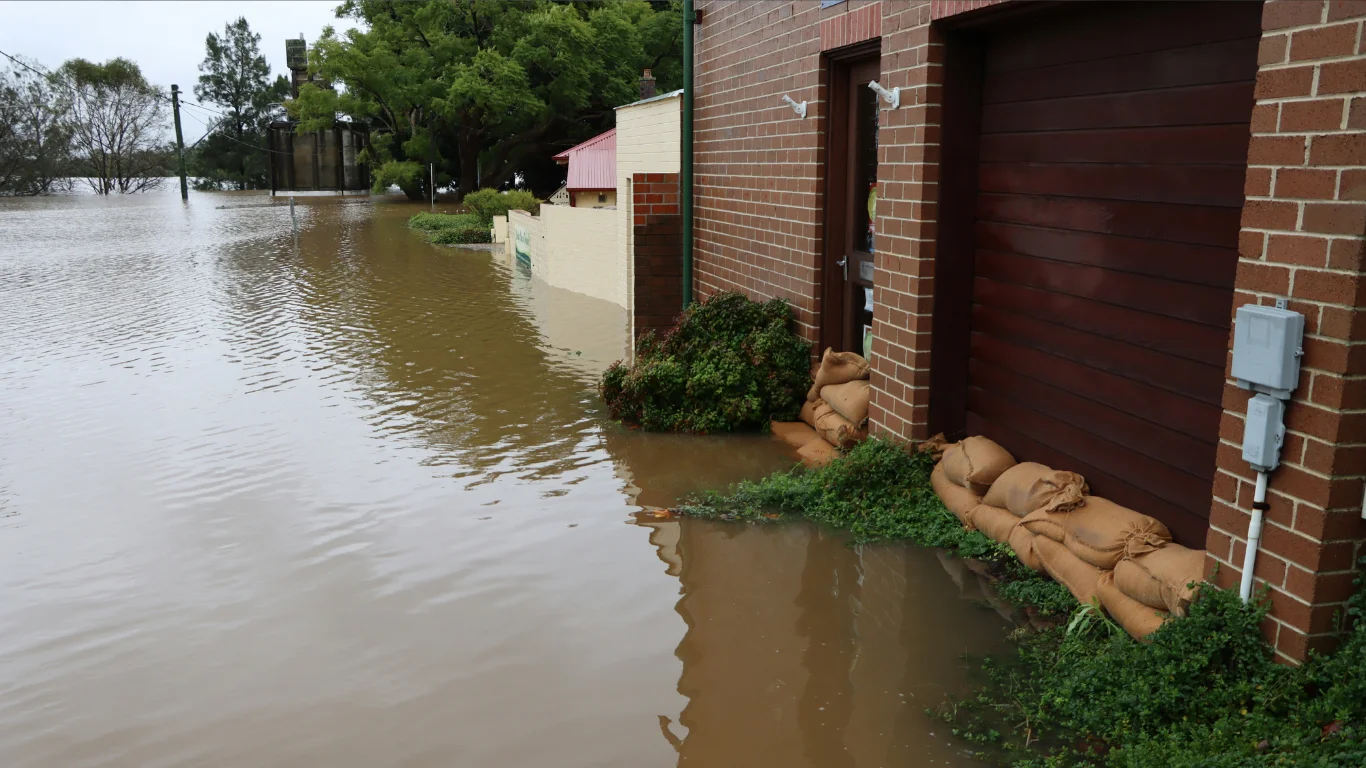Are you looking for Silverfish look alike tiny, black bugs? What do Silverfish look like? Their Identification and how to get rid off? No worries, we are answering here to all your queries.
Bugs that look like silverfish are tiny weather-less with 3 long tails, and skinny skin. They are not harmful to humans but they destroy their property, looks & other things. Bugs usually refer to a wide variety of small insects with often feathers.
Introduction
Silverfish is a small bug with three long tails which are part of their body. It is like a bit of fish with a shiny look. It is the oldest insect in the world & lives worldwide because they can survive in all types of environments. Usually, it is seen in the United State. It tries to hide itself from the eye of humans & lives in a dump area of the house.
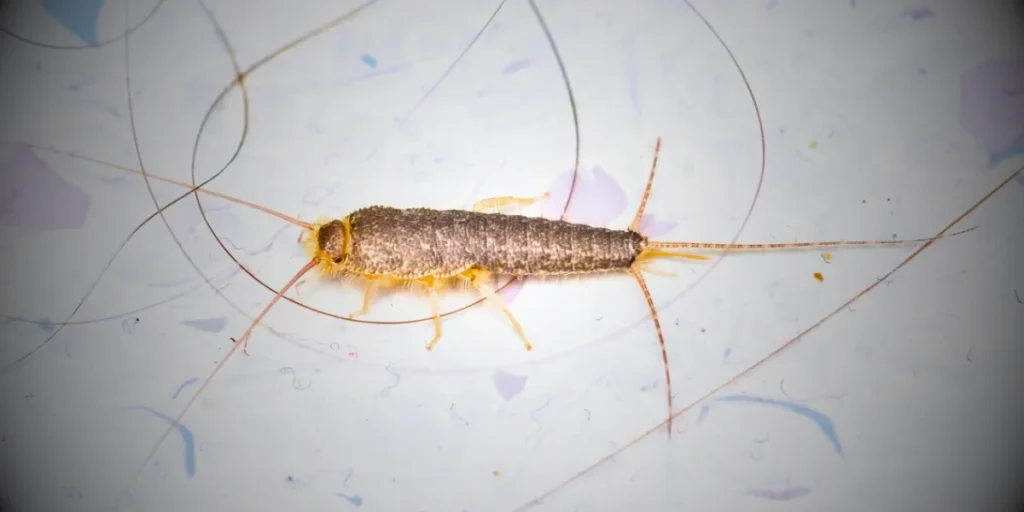
Identification of Silverfish
These are the 6 points that identify the bug silverfish:
| Color: | Silver to Brown |
| Size: | ¾ inches |
| Legs: | 6 legs |
| Antennae: | Yes |
| Shape: | Oval, elongated |
| Region: | U.S |
What do Silverfish Look Like
Silverfish looks like a small fish, the color of the bug is silver to metallic brown. They have a long body structure usually 12 to 19 MM, six legs and two antennas. These bugs are called bristletails because they have three long bristles at the end of their tail. They come out mostly at night. Silverfish have no wings but they can run fast. Some are bugs that look like silverfish but their body parts are not exactly similar to this insect.
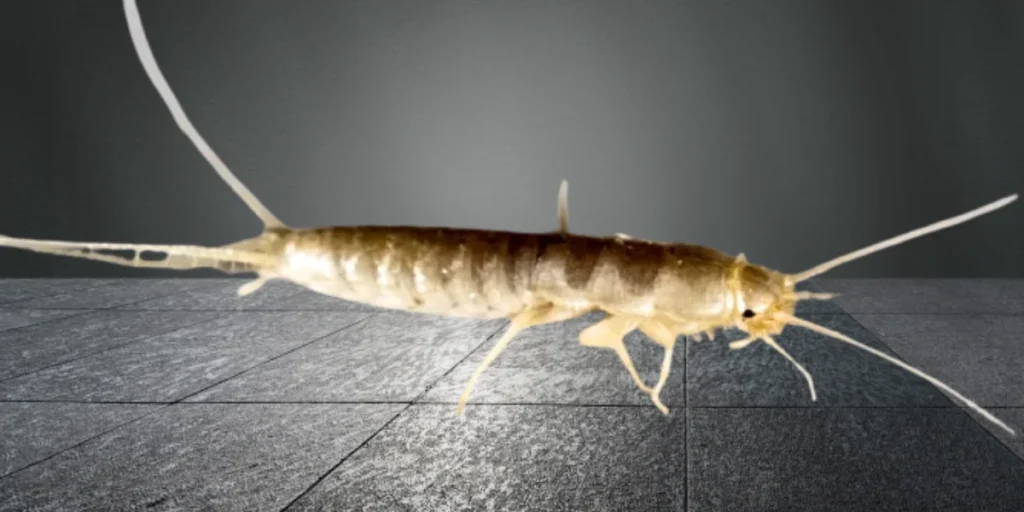
Where do Silverfish Live
They like to live in dark & damp places they like cool areas you’ll find in your home in these 5 places:
- Bathrooms
- Basements
- Behind wallpapers
- Inside books or cardboard
- Underneath
8 Bugs That Look Like Silverfish
Silverfish is common in homes but many people confuse it with other bugs. Let’s understand these common insects:
1. Firebrats:
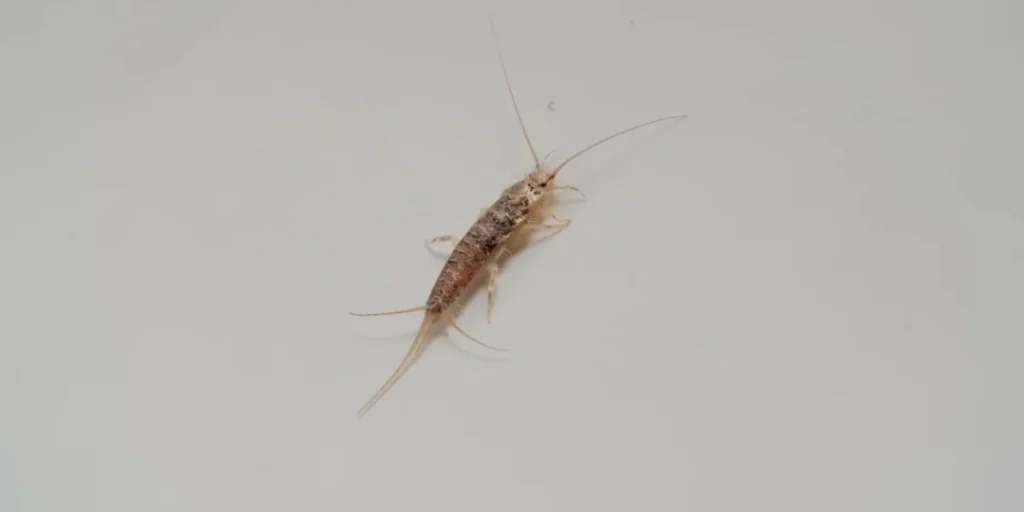
Firebrats look most similar to silverfish and both have the same body shape but firebrats are more carrot-shaped. The color comes from grey to brown along with black dark spots or stripes on the whole body.
- Size: The size of this bug is smaller as compared to silverfish the total body length is measured between 6-12 mm. However 6 to 12 mm is generally around one-fourth to one-half inch.
- Color: Color of firebrats are often gray & dark brown shade, sometimes they have a mottled pattern that shows lighter & dark shade.
- Living Environment: Firebrats prefer to live in warm & hot areas as compared to silverfish insects. You often find them near ovens, hot pipelines, & boilers. 90 to 108-degree temperature helps to stay healthy or grow and it also facilitates reproduction. When it comes to dry areas they quickly dry themselves.
- Feed: They mainly eat things made from fiber & glucose such as cereals, pasta, flour & pet foods. All these are household items. Firebrats also eat wallpaper, books, & book bindings because these have cellulose and are glued with plant-based materials. They’re also drawn to starch in clothes and some glues.
2. Millipedes:
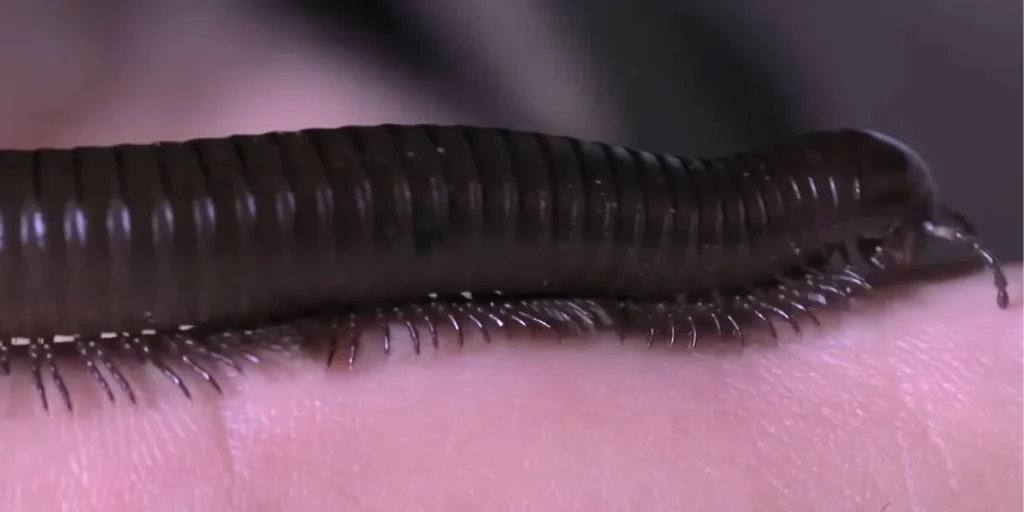
Millipedes have long-shaped bodies divided into many segments; each part has two pairs of legs which makes them a lot of legs. It comes in various colors that help margin into the natural environment like soil, and plants.
- Size: Millipedes are generally 1 to 4 inches in length. The large size grows up to 12 inches means 30 cm commonly hides light areas & lives in damp places.
- Color: It has different variations of colors brown, black, red, orange, yellow & gold all colors depend on environments.
- Living Condition: They prefer to live in damp & dark places in your home where heat & humidity both are present.
- Diet: Its primary feed is to eat dead downfall leaves & plant materials. They consume wood & organic material in the soil. It destroys your garden soil.
3. Jumping Bristletails:
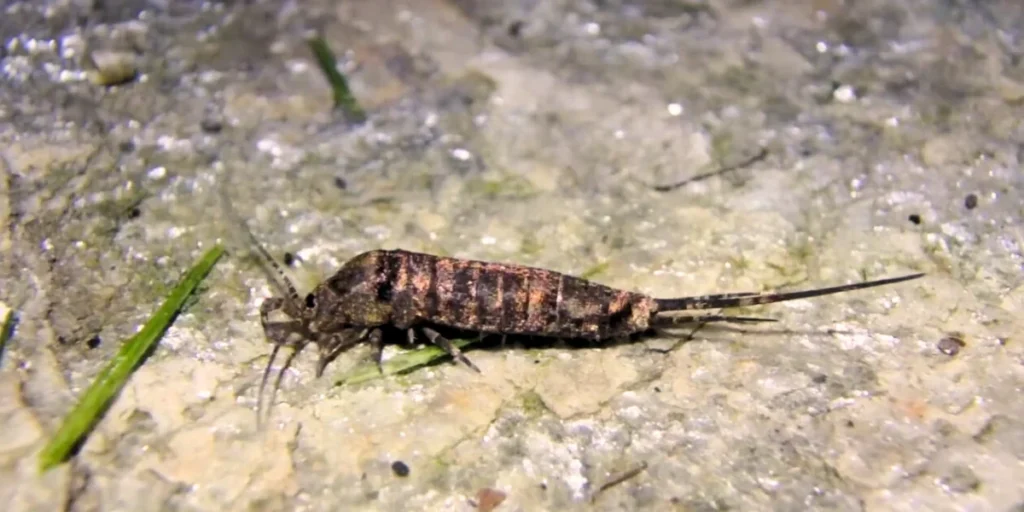
Jumping Bristletails are insects that look like silverfish because they are related to each other. They got their name because they can high jump.
- Size: They have bigger, longer, agile legs which make them longer & larger than silverfish. Their size typically ranges from about 1 to 1.5 inches (2.5 to 3.8 cm) long.
- Color: You can see Bristletails in many colors such as gray, brown, reddish brown & light tan are common.
- Living Environment: Jumping Bristletails like to live in an outdoor damp place where they get shelter & food easily. They preferred humid environments that offer protection from sunlight and dryness. You can find them in garden soil & plants.
- Diet: Their favorite diet is to eat dead leaves, rooting wood, plant litter, fungi, and mold & break down various organic materials in the soil.
4. Earwigs:
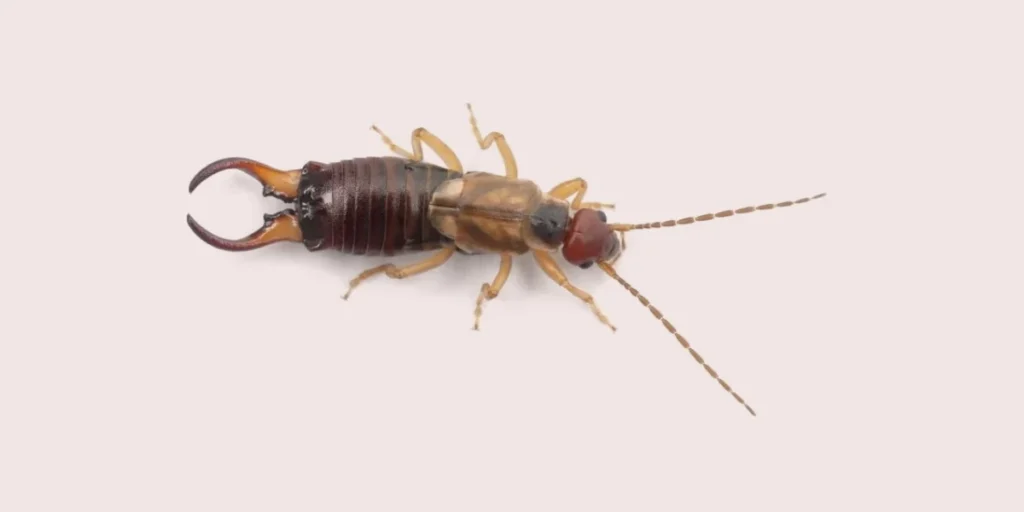
Earwigs have wings and distinctive pincers (two appendages) at their back end, so these are also bugs that look like silverfish. Other than these differences, earwigs and silverfish look quite similar.
- Size: Earwigs range size is from about 6 to 25 millimeters (0.25 to 1 inch) long. The size can vary depending on the categories.
- Color: They are usually found in dark brown & radish brown colors.
- Living Environment: They hide in dark shelter spots during the daytime. They take shelter in wall cracks, under flower pots & corners, or in dark areas of the home.
- Feed: Earwigs eat dead leaves, fungi & mold, unlike bristletails. They can catch on smaller insects and other small creatures.
5. Centipedes:
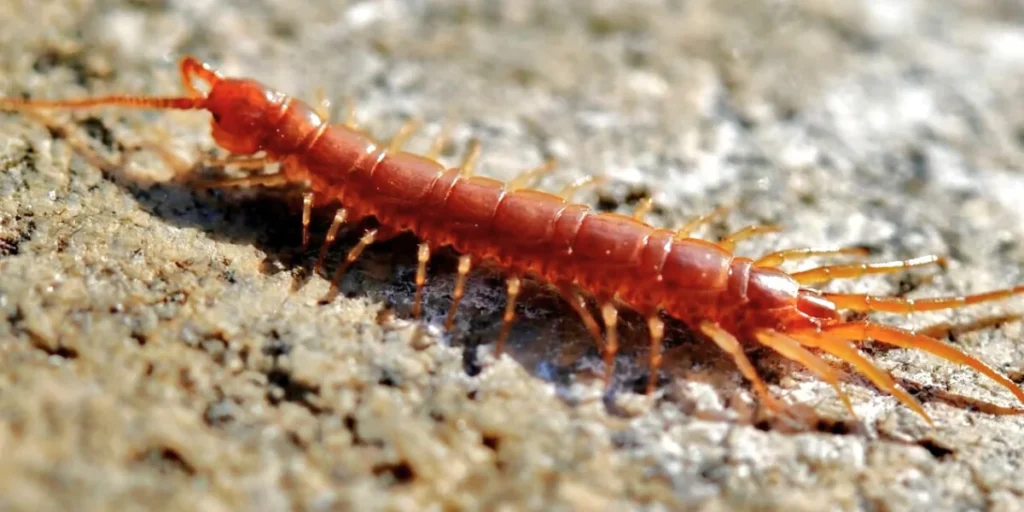
Centipede bug look like silverfish but have a little difference; it is a predator bug. It has many parts of its body but each segment has its leg. It has more than 30 legs.
- Size: The size of centipedes is generally between 1 to 6 inches long (2.5 to 15 cm); some bugs are large.
- Color: Many centipedes are pale yellow. They can also be various shades of brown, from light to dark.
- Living Environment: Centipedes live in dark, dumped, & shelter places. They preferred to live under rocks, in soil, and under the leaves. You also find them in basements, under furniture, or in damp areas like bathrooms.
- Diet: Centipede’s diet is based on various insects, spiders, worms, ants and other small invertebrates.
6. Carpet Beetle Larvae:
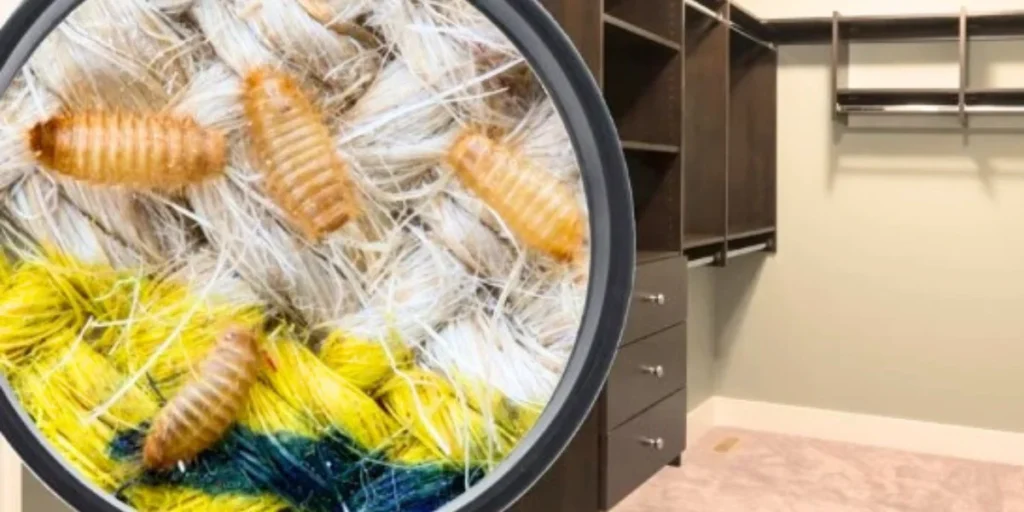
Carpet beetle larvae come in many types, each type with different color patterns, so they don’t look much like silverfish. Both bugs share some similar habits. While carpet beetle larvae aren’t as fast as silverfish. They have a segmented, fuzzy & hairy texture body which makes them slightly different from other bugs.
- Size: Carpet beetle larvae are generally small bugs that look like silverfish, ranging from about 1/8 to 1/4 inch long (3 to 6). Some can grow a little larger, but they remain relatively small compared to many other pests.
- Color: Many are carpet beetles in brown, beige & cream color.
- Living Environment: They prefer undisturbed areas that are near to food & shelter. Commonly you find clothes, wool, under furniture, & pet food products.
- Diet: Carpet beetle larvae feed on a variety of materials, particularly those containing natural fibers. They eat wool, cotton, silks, animal & pet food.
7. Isopods:
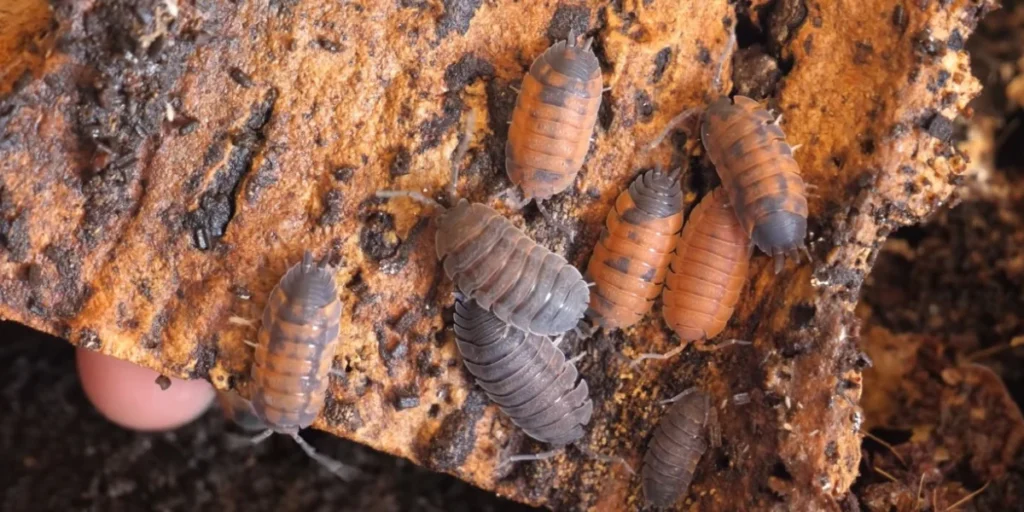
Isopods are a group of different types of bugs like roly-polies, pill bugs, snow bugs, and army bugs. They live in the same place unlike silverfish that live in a dump area. They have segmented bodies with a hard exoskeleton. Each insect has seven pairs of legs & they have different body shapes from flat to oval & oval to more cylindrical.
- Size: They are small, just a few millimeters long, to large ones that can be up to 12 inches (30 cm) long. Some isopods are quite small, while others, like the giant pill bug, can be much larger.
- Color: Different variety of colors gray, brown, and even bright shades depending on the species.
- Living Environment: Isopods like to live in damp, dark environments such as under logs, rocks, or leaf litter. They can also be found indoors in moist areas.
- Feed: A group of Isopods eat multiple things, wood, dead leaves, plant materials, small insects & organic matter.
8. Woodlice/Booklice:
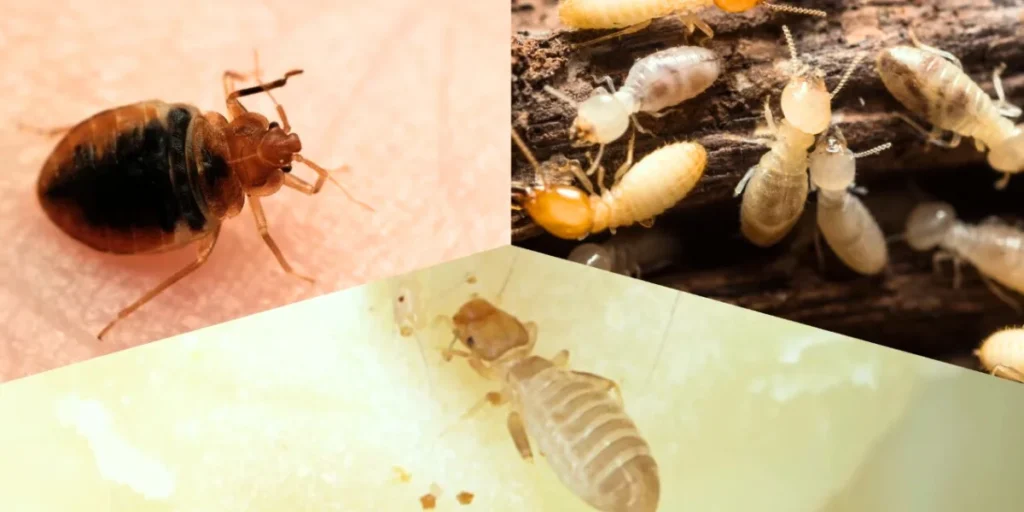
Woodlice bugs are hard shells on bodies, also known as pill bugs or roly-polies, have a hard, segmented exoskeleton, and look a bit like tiny armadillos.
Booklice are soft-bodied and may be pale or translucent. They do not have a hard shell like woodlice.
- Size: Woodlice insects are usually about 0.5 to 1 inch long (1.3 to 2.5 cm) & Booklice Booklice are very small, usually less than 1/16 inch (1.5 mm) long.
- Color: Woodlice bug color is gray & Booklice color of insect is white to pale yellow.
- Living Environment: Woodlice live in damp, dark environments such as under logs, stones, or leaf litter. You can also see in moist areas inside homes. Booklice commonly live in dry areas & dusty environments like bookshelves or inside paper products. They prefer warm, humid conditions.
- Feed: Woodlice/Booklice both are eating dead leaves, paper material & fungi. They eat the same diet, unlike other bugs.
Now you have learned Successfully tiny and black bugs that look alike Silverfish, now read following methods to get rid of silverfish.
How to Get Rid of
People are used to various techniques to get rid of silverfish. They used both natural & chemical to tackle them.
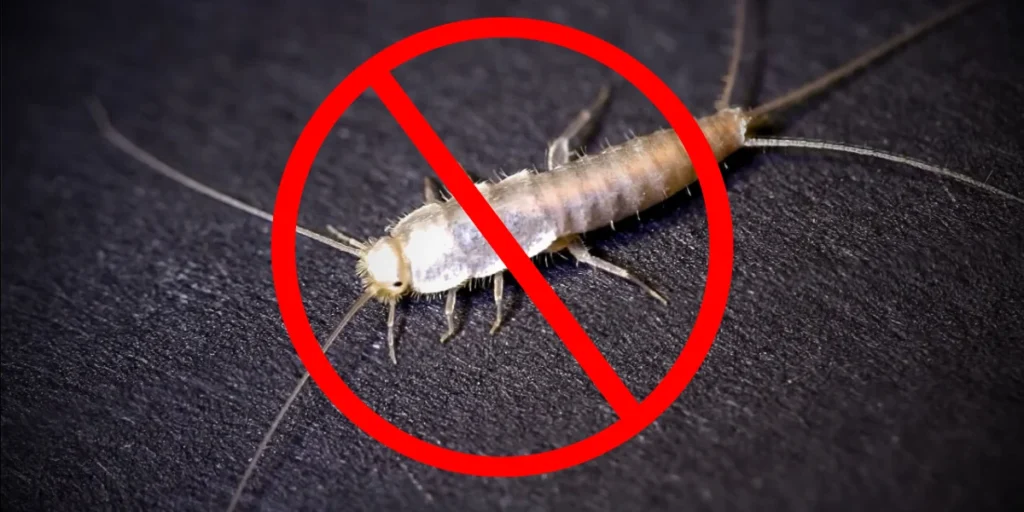
Natural Methods
Most people like to use their natural way. Let’s explore the 6 ways to get rid of silverfish & that look like silverfish bugs:
- Clean Regularly: People clean their houses, carpets, & floors to remove silverfish & their eggs. Dust off shelves, baseboards, and other surfaces where silverfish might hide.
- Remove Food Sources: They keep properly saved food in sealed containers & clean crumbs quickly.
- Remove Paper Materials: Dispose of books, newspapers & paper materials that can cause the growth of silverfish.
- Natural Remedies: Sprinkle the powder where silverfish bugs are active. It is safe for humans and pets, but it is dangerous for insects.
- Fix Leaks: If any leaks in the pumping & the roof repair them.
- Essential Oils: Some essential oils, like lavender or citrus, can decline silverfish. Mix with water and spray around infested areas.
Chemical Method
Some people don’t prefer to use the natural way they sprinkle the different chemical powders & spray in the silverfish. They are sometimes also called professional Pest Control.
Additional Tips
Here I will share 3 tips that I implement in my house & bakery to clear my places of silverfish & bugs that look like silverfish.
- Seal entry points of bugs like windows, doors and baseboards where silverfish easily enter.
- Reduce humidity from all the dumped places.
- Clean and spray regularly to finish the silverfish & bugs that looks like a silverfish.
Conclusion
Silverfish don’t bite or spread diseases but can trigger allergies. They damage paper and other belongings. So it’s compulsory to handle infection quickly. You can try reducing their hiding spots, using baits, or natural remedies. If these don’t work, seek help from a pest control expert.
FAQs
Silverfish are not dangerous to human health even if they hide themselves in dark spots from humans.
They can damage personal belongings, especially items made of paper, like books and documents.
They like to live in dumped & dark places not only harming humans but also affecting the property of humans. Some insects damage the beauty of plants.
Yes, most of the habits of these insects are the same such as feeding & living places.
